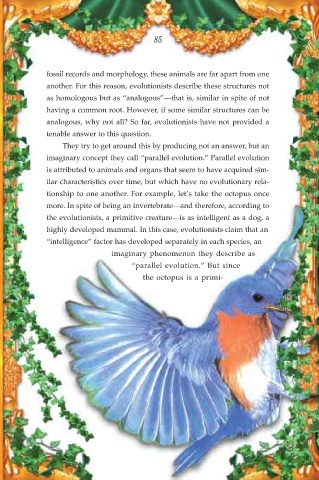Page 87 - The Miracle Of Talking Birds
P. 87
85
fossil records and morphology, these animals are far apart from one
another. For this reason, evolutionists describe these structures not
as homologous but as “analogous”—that is, similar in spite of not
having a common root. However, if some similar structures can be
analogous, why not all? So far, evolutionists have not provided a
tenable answer to this question.
They try to get around this by producing not an answer, but an
imaginary concept they call “parallel evolution.” Parallel evolution
is attributed to animals and organs that seem to have acquired sim-
ilar characteristics over time, but which have no evolutionary rela-
tionship to one another. For example, let’s take the octopus once
more. In spite of being an invertebrate—and therefore, according to
the evolutionists, a primitive creature—is as intelligent as a dog, a
highly developed mammal. In this case, evolutionists claim that an
“intelligence” factor has developed separately in each species, an
imaginary phenomenon they describe as
“parallel evolution.” But since
the octopus is a primi-

